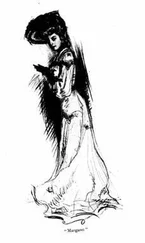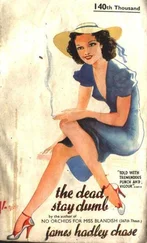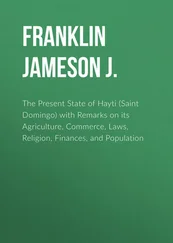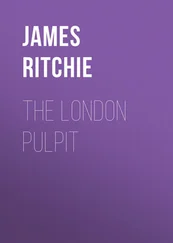James Ritchie - The Night Side of London
Здесь есть возможность читать онлайн «James Ritchie - The Night Side of London» — ознакомительный отрывок электронной книги совершенно бесплатно, а после прочтения отрывка купить полную версию. В некоторых случаях можно слушать аудио, скачать через торрент в формате fb2 и присутствует краткое содержание. Жанр: foreign_prose, на английском языке. Описание произведения, (предисловие) а так же отзывы посетителей доступны на портале библиотеки ЛибКат.
- Название:The Night Side of London
- Автор:
- Жанр:
- Год:неизвестен
- ISBN:нет данных
- Рейтинг книги:4 / 5. Голосов: 1
-
Избранное:Добавить в избранное
- Отзывы:
-
Ваша оценка:
- 80
- 1
- 2
- 3
- 4
- 5
The Night Side of London: краткое содержание, описание и аннотация
Предлагаем к чтению аннотацию, описание, краткое содержание или предисловие (зависит от того, что написал сам автор книги «The Night Side of London»). Если вы не нашли необходимую информацию о книге — напишите в комментариях, мы постараемся отыскать её.
The Night Side of London — читать онлайн ознакомительный отрывок
Ниже представлен текст книги, разбитый по страницам. Система сохранения места последней прочитанной страницы, позволяет с удобством читать онлайн бесплатно книгу «The Night Side of London», без необходимости каждый раз заново искать на чём Вы остановились. Поставьте закладку, и сможете в любой момент перейти на страницу, на которой закончили чтение.
Интервал:
Закладка:
Ritchie J. Ewing James Ewing
The Night Side of London
INTRODUCTION
It is said of a stranger who came to London for the first time, and took up his quarters in one of the most crowded city streets, that he remained standing at the door the whole of the first day of his London existence, because he waited until the crowd had gone. A man, says Max Schlesinger, who would do that, ought to rise and go to bed with the owl. The owl is the symbol of wisdom; for once I would prevail upon the reader to do as the owls do, and become wise as they. You may live at Clapham all your life, come into the city every day, attend on a gospel ministry, as the slang phrase is, – for it is not only wicked people that talk slang, – and know no more of London than the British public do of Timbuctoo.
Think of what London is. At the last census there were 2,362,236 persons of both sexes in it; 1,106,558 males, of whom 146,449 were under 5 years of age; and 1,255,678 females, of whom 147,173 were under 5 years of age. The unmarried males were 679,380, ditto females 735,871; the married men were 399,098, the wives 409,731; the widowers were 37,080, the widows 110,076. On the night of the census there were 28,598 husbands whose wives were not with them, and 39,231 wives mourning their absent lords. In 1856 the number of children born in London was 86,833, only one in 25 of which is illegitimate; in the same period 56,786 persons died. The Registrar-General assumes that, with the additional births, and by the fact of soldiers and sailors returning from the seat of war, and of persons engaged in peaceful pursuits settling in the capital, sustenance, clothing, and house accommodation must now be found in London for about 60,000 inhabitants more than it contained at the end of 1855. Think of that – the population of a large city absorbed in London, and no perceptible inconvenience occasioned by it! Houses are still to let; there are still the usual tickets hung up in windows in quiet neighbourhoods, intimating that apartments furnished for the use of single gentlemen can be had within; the country still supplies the town with meat and bread, and we hear of no starvation in consequence of deficient supply. London is the healthiest city in the world. The city death-rate, according to Dr. Letheby’s report for 1857, is 22.5 per 1000, and in all England it is 22.2. During the last ten years the annual deaths have been on the average 25 to 1000 of the population, in 1856 the proportion was 22 to 1000; yet, in spite of this, half of the deaths that happen on an average in London between the ages of 20 and 40 are from consumption and diseases of the respiratory organs. The Registrar traces this to the state of the streets. He says: “There can be no doubt that the dirty dust suspended in the air that the people of London breathe often excites diseases of the respiratory organs. The dirt of the streets is produced and ground now by innumerable horses, omnibuses, and carriages, and then beat up in fine dust, which fills the mouth, and inevitably enters the air-passages in large quantities. The dust is not removed every day, but, saturated with water in the great thoroughfares, sometimes ferments in damp weather, and at other times ascends again under the heat of the summer sun as atmospheric dust.”
London, says Henry Mayhew, may be safely asserted to be the most densely populated city in all the world; containing one-fourth more people than Pekin, and two-thirds more than Paris – more than twice as many as Constantinople – four times as many as St. Petersburg – five times as many as Vienna, or New York, or Madrid – nearly seven times as many as Berlin – eight times as many as Amsterdam – nine times as many as Rome – fifteen times as many as Copenhagen – and seventeen times as many as Stockholm. “London,” says Horace Say, “c’est une province couverte de maisons.” It covers an area of 122 square miles in extent, or 78,029 statute acres; and contains 327,391 houses. Annually 4000 new houses are in erection for upwards of 40,000 new-comers. The continuous line of buildings stretching from Highgate to Camberwell is said to be 12 miles long. It is computed if the buildings were set in a row they would reach across the whole of England and France, from York to the Pyrenees.
When the stone in Panyer’s Alley was placed on its site three centuries since, the circumference was about five miles. At present, however, to make a pedestrian expedition around the metropolis would, to most persons, be an undertaking of some importance, as may be seen by referring to the following particulars, which have been gathered from a recently published map: – From Chiswick to Kentish-town, 12 miles; from Kentish-town to Millwall, 17½ miles; from Millwall to Chiswick, 28 miles – total, 57½ miles, very nearly three days’ journey, at the rate of 20 miles a day; and it will be observed that in the line drawn, Battersea, Clapham, Canning-town, and many other places, which even at present can be scarcely said to be separated from London, have been left out. “As the crow would fly” across streets and houses from the point whence we started at Chiswick to the farthest east, the distance is nearly eleven miles, and the greatest width from north to south upwards of seven miles. The metropolis is divided into 38 different poor-law districts, some of them parishes, and some of them unions, but each managing separately their own poor. Of these, 27 are in Middlesex, two in Kent, and nine in Surrey. Of the 27 in Middlesex, 10 are unions of various extent; 17 are single parishes, many of them of great extent, and comprising a large amount of property and population. The unions in Middlesex consist of a small number of parishes, two consisting of two parishes, two of three, one of five, one of four, one of six, one of seven, and one of nine parishes. The city of London consists of 98 parishes, some of them small in extent, but containing a large amount of property and population. The unions in Kent consist of four and seven parishes. Of the nine in Surrey three are unions, consisting, one of two parishes, another of three, and the third of six parishes. The remaining six are all single parishes, each administering its own affairs. The total population of these districts is 2,500,000; the average number of paupers to be dealt with 105,000; the amount of expenditure for the year ending Lady-day, 1856, was £875,000; and the net rateable value of the property contributing to the relief of the poor was £10,900,000. The proportion which the metropolis bore to the whole of England and Wales was, as to population, one-eighth; as to pauperism, one-twelfth.
London has 10,500 distinct streets, squares, circuses, crescents, terraces, villas, rows, buildings, places, lanes, courts, alleys, mews, yards, rents. The paved streets of London, according to a return published in 1856, number over 5000, and exceed 2000 miles in length; the cost of this paved roading was 14 millions, and the repairs cost £1,800,000 per annum. The Post Office employs 3200 officials in London alone. London contains 1900 miles of gas pipes, with a capital of nearly £4,000,000 spent in the preparation of gas. The cost of gas-lighting is half a million. It has 360,000 lights; and 13,000,000 cubic feet of gas are burnt every night. Last year along these streets the enormous quantity of upwards of 80 millions of gallons of water rushed for the supply of the inhabitants, being nearly double what it was in 1845. Mr Mayhew says, if the entire people of the capital were to be drawn up in marching order, two and two, the length of the great army of Londoners would be no less than 670 miles, and supposing them to move at the rate of three miles an hour, it would require more than nine days and nights for the average population to pass by. To accommodate this crowd, 125,000 vehicles pass through the thoroughfares in the course of 12 hours; 3000 cabs, 10,000 private and job carriages and carts, ply daily in the streets; at the present time there are upwards of 800 omnibuses running along various routes in the metropolis, and of this number 595 are the property of a single and mostly foreign proprietary, the London General Omnibus Company.
Читать дальшеИнтервал:
Закладка:
Похожие книги на «The Night Side of London»
Представляем Вашему вниманию похожие книги на «The Night Side of London» списком для выбора. Мы отобрали схожую по названию и смыслу литературу в надежде предоставить читателям больше вариантов отыскать новые, интересные, ещё непрочитанные произведения.
Обсуждение, отзывы о книге «The Night Side of London» и просто собственные мнения читателей. Оставьте ваши комментарии, напишите, что Вы думаете о произведении, его смысле или главных героях. Укажите что конкретно понравилось, а что нет, и почему Вы так считаете.












